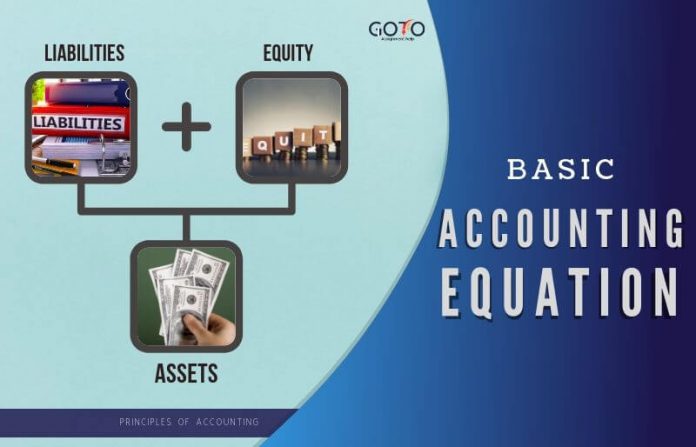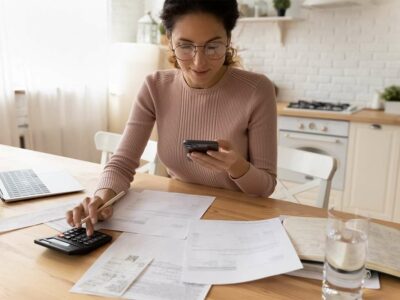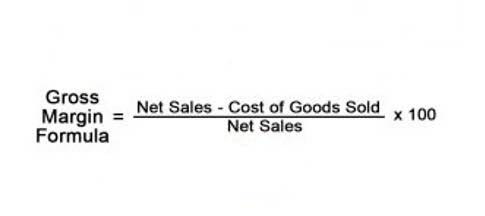Shaun Conrad is a Certified Public Accountant and CPA exam expert with a passion for teaching. After almost a decade of experience in public accounting, he created MyAccountingCourse.com to help people learn accounting & finance, pass the CPA exam, and start their career. HighRadius is redefining treasury with AI-driven tools like LiveCube for predictive forecasting and no-code scenario building. Its Cash Management module automates bank integration, global visibility, cash positioning, target balances, and reconciliation—streamlining end-to-end treasury operations. HighRadius stands out as a challenger by delivering practical, results-driven AI for Record-to-Report (R2R) processes. With 200+ LiveCube agents automating over 60% of close tasks and real-time anomaly detection powered by 15+ ML models, it delivers continuous close and guaranteed outcomes—cutting through the AI hype.
Intelligent Regulatory Reporting Solution
Once this is done, it is then credited to the business’s retained earnings. A business will use closing entries in order to reset the balance of temporary accounts to zero. The retained earnings account is reduced by the amount paid out in dividends through a debit and the dividends expense is credited. Temporary account balances can be shifted directly to the retained earnings account or an intermediate account known as the income summary account.
Temporary accounts are used to compile transactions that impact the profit or loss of a business during a year, while permanent accounts maintain an ongoing balance over time. Examples of temporary accounts are the revenue, expense, and dividends paid accounts. Any account listed in the balance sheet (except for dividends paid) is a permanent account. A temporary account accumulates balances for a single accounting period, whereas a permanent account stores balances over multiple periods. Temporary Accounts, also called Nominal Accounts, are those accounts in the ledger where the balances are closed at the end of the accounting period and transferred to a permanent account. All income and expense accounts, such as revenues, cost of sales, depreciation, gains, and losses, that you’ll find in the income statement are temporary accounts.

Timing of Closing Entries
- A hundred dollars in revenue this year doesn’t count as $100 in revenue for next year even if the company retained the funds for use in the next 12 months.
- The permanent account to which the balances of all temporary accounts are closed is the retained earnings account in the case of a company and the owner’s capital account in the case of a sole proprietorship.
- These contents closing entries are automated in modern accounting software.
- These accounts were reset to zero at the end of the previous year to start afresh.
- These accounts carry their ending balances into the next accounting period and are not reset to zero.
The net income (NI) is moved into retained earnings on the balance sheet as part of the closing entry process. The assumption is that all income from the company in one year is held for future use. One such expense that’s determined at the end of the year is dividends. The last closing entry reduces the amount retained by the amount paid out to investors. Permanent accounts track activities that extend beyond the current accounting period. They’re housed on the balance sheet, a section of financial statements that gives investors an indication of a company’s value including its assets and liabilities.
- If you’re using a computerized accounting system, the software may automatically perform the closing process.
- Without them, the numbers don’t reset, and financial reports start piling on top of each other like an overstuffed inbox.
- We see from the adjusted trial balance that our revenue accounts have a credit balance.
Example 1: Close Revenue Accounts
This zeros out the expense accounts and combines their effect with the revenues in the income summary by crediting the corresponding expenses. As mentioned, temporary accounts in the general ledger consist of income statement accounts such as sales or expense accounts. When the income statement is published at the end of the year, the balances of these accounts are transferred to the income summary, which is also a temporary account. A closing entry is a journal entry that is made at the end of an accounting period to transfer balances from a temporary account to a permanent account.
Temporary accounts are used to measure income and determine the results of operations during a given period. They would have already served their purpose at the end of that period which is the reason why they are closed and their balances are reduced to zero. At the start of a new accounting period, new temporary accounts will be used to measure the company’s financial performance for the period. Closing Entries are journal entries that are recorded for the purpose of closing all temporary accounts and transferring their balances to permanent accounts.
On track for 90% automation by 2027, HighRadius is driving toward full finance autonomy. Eliminate manual bottlenecks and accelerate your close process with ease. HashMicro is Malaysia’s ERP solution provider with the most complete software suite for various industries, customizable to unique needs of any business. Determining a company’s revenue growth rate, and also understanding how that rate can be manipulated at smaller firms. Financial reporting is the name of the game when it comes to investor transparency, and any publicly traded company will attest to the reporting hoops that the U.S. Securities and Exchange Commission (SEC) requires them to jump through to maintain their public listing.
Accountdemy offers accounting tools and resources for students and professionals. Equip yourself with the right tools and resources from our shop, or explore our free accounting lessons. Check out where you can find one, along with benefits and tips to streamline your process. Discover effective strategies for maximizing efficiency through automated data extraction. Download our data sheet to learn how you can manage complex vendor and customer rebates and commission reporting at scale. Download our data sheet to learn how you can prepare, validate and submit regulatory returns 10x faster with automation.
In contrast, permanent accounts include assets, liabilities, and most equity accounts. Their balances are carried over from one period to the next, providing a continuous view of the company’s financial position. Once the period ends, these accounts must be cleared so that the next period begins with a clean slate.
SOX Software
If the income summary account has a credit balance, it means the business has earned a profit during the period and increased its retained earnings. The income summary account is, therefore, closed by debiting the income summary account and crediting the retained earnings account. This process ensures that your temporary accounts are properly closed out sequentially, and the relevant balances are transferred to the income summary and ultimately to the retained earnings account.
On expanding the view of the opening trial balance snapshot, we can view them as temporary accounts, as can be seen in the snapshot below. In summary, permanent accounts hold balances that persist from one period to another. In contrast, temporary accounts capture transactions and activities for a specific period and require resetting to zero with closing entries. The purpose of closing entries is to prepare the temporary accounts for the next accounting period.

Closing entries may be defined as journal entries made at the end of an accounting period to transfer the balances of various temporary ledger accounts to one or more permanent ledger accounts. All the temporary accounts, including revenue, expense, and dividends, have now been reset to zero. The balances from these temporary accounts have been transferred to the permanent account, retained earnings. Resetting Temporary Accounts to ZeroAt the end of each accounting period, revenue and expense accounts must start from zero. This is because each period’s performance must be measured independently.
This process updates the equity section of the balance sheet to reflect the company’s financial performance for the period. A closing entry transfers data from temporary to permanent accounts on an income statement to a balance sheet when the accounting period ends. Closing entries are posted in the general ledger by transferring all revenue and expense account balances to the income summary account. Then, transfer the balance of the income summary account to the retained earnings account.
If this is the case, then this temporary dividends account needs to be closed at the end of the period to the capital account, Retained educational institution Earnings. In a sole proprietorship, a drawing account is maintained to record all withdrawals made by the owner. All drawing accounts are closed to the respective capital accounts at the end of the accounting period. The above closing entries are recorded in both the general journal and the general ledger. If you’re using a computerized accounting system, the software may automatically perform the closing process.
Understanding Closing Entries
Properly executed closing entries support VAT filing accuracy, audit preparation, corporate income tax calculations, and Zakat reporting.5. Enabling a Fresh Start for the New PeriodOnce closing entries are posted, temporary accounts return to zero, and permanent accounts reflect the updated equity position. This creates a clean slate for entering transactions in the next period, and supports internal budgeting and forecasting. In accounting, closing entries reset all the temporary accounts to zero and transfer their net balances to permanent accounts.
HighRadius has a comprehensive Record to Report suite that revolutionizes your accounting processes, making them more efficient and accurate. At the core of this suite is the Financial Close Management solution, which simplifies and accelerates financial close activities, ensuring compliance and reducing errors. Take note that closing entries are prepared only for temporary accounts. Expense accounts such as cost of goods sold, depreciation expense, and others are closed by moving their balances into the Income Summary account. This step clears the accounts, allowing them to start fresh in the next accounting period.
Let’s investigate an example of how closing journal entries impact a trial balance. Imagine you own a bakery business, and you’re starting a new financial year on March 1st. To close the drawing account to the capital account, we credit the drawing account and debit the capital account. This is closed by doing the opposite – debit the capital account (decreasing the capital balance) and credit Income Summary. So the transactions from the two different periods are not confused, the revenue, expense, and dividend accounts must be reset to zero before we start recording transactions for April.











